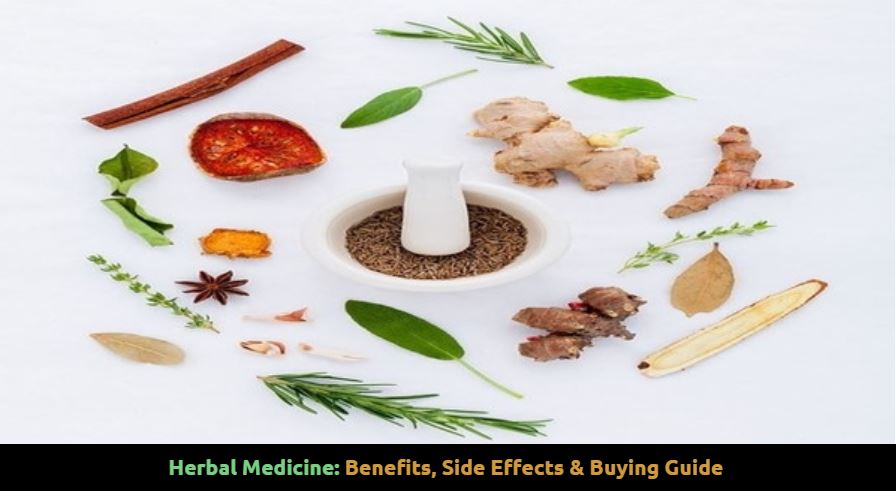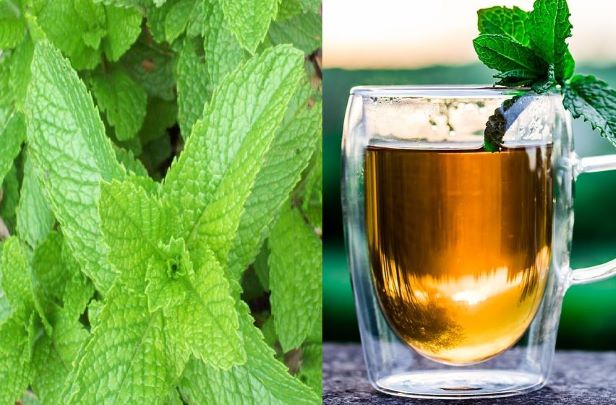 We cannot have a discussion on the history of modern medicine without herbal medicines where plants were the only medicine used at the beginning and its history dates back to prehistoric times even before the dawn of civilization.
We cannot have a discussion on the history of modern medicine without herbal medicines where plants were the only medicine used at the beginning and its history dates back to prehistoric times even before the dawn of civilization.
Long before our ancestors realized the positive benefits of herbal medicine, non-human animals have been known to use plants as natural remedies to treat their illnesses.
According to The World Health Organization, a substantial proportion of the world population rely on herbal medicines for their health care needs and some modern drugs are still extracted from plants.
Since our lifestyles as vegans are closely linked with plants, knowing the benefits of herbs can help us strengthen our connection with nature further whether we use them for added nutrition or for specific health & healing purposes.
In this post, you will find a list of top herbal medicines commonly used, and few of these herbs may already be in your kitchen and can easily be grown in your garden for ease of access and aesthetic value.
Other than being herbal remedies, herbs are one of the most versatile ingredients, where you can use them to brew tea, for cooking to add flavor, mix with smoothies, salads, and to use with many more dishes.
Do note that each & every benefit mentioned under these herbs may not necessarily be proven scientifically, though these are assumed benefits with the traditional practice of herbal medicines & spices.
Before using any new herb we recommend consulting a health care professional or a qualified & reputed herbalist (links at the bottom).
Note:
If you have allergies, trying to conceive, pregnant, breastfeeding, have an auto-immune disorder, scheduled for surgery or currently under medication, make sure to check with your healthcare provider before taking herbal medicine. Stop using the herbs and get emergency medical help if you get any severe side effects mentioned under each herb.
1) Echinacea (coneflowers)

Echinacea is a herb that is grown in the United States, Canada, and Europe.
Medicine is known to be made from its leaves, stems, flowers, and roots where people commonly take it to fight infections especially the flu and colds.
Echinacea being a flowering plant, it is much easier to grow in your garden and three species known for herbal medicine are Echinacea Angustifolia, Echinacea Pallida and Echinacea Purpurea.
It is available as tea, liquid extracts, supplements or as a dried herb.
Health Benefits
- For common cold & flu
- Boost the immune system
- Healthy cells
- Fight cancer
- To alleviate pain
- For constipation
- Control blood sugar
- Manage anxiety
- Reduce inflammation
- Fights infection such as bloodstream infection, urinary tract infection, vaginal yeast infection, genital herpes, gum disease, malaria, syphilis, and typhoid.
- For healthy skin & as a treatment for various skin conditions such as arthropod bites, eczema, inflammatory skin conditions, psoriasis, snake bite, skin infections, stings, and wounds.
Side Effects
Echinacea is known to be safe for most people. High doses of Echinacea may cause nausea, vomiting, and dizziness.
Other known side effects are fever, stomach ache, diarrhea, disorientation, sore throat, headache, insomnia, and joint & muscle pain.
Applying on the skin may cause redness, itchy skin, or rash.
2) Garlic
Garlic has been used as a medicine for many centuries and renowned for its various health benefits in many countries and cultures.
Today it is an indispensable ingredient in many kitchens, where it is used to boost flavor & aroma in curries, stews, pasta, hummus, stir-fries, sauces, and many other recipes.
Garlic is used for many medical conditions linked to heart and blood flow as well as various cancers.
Health Benefits
- A natural antibiotic and can fight against the cold & flu
- Maintains blood pressure
- Reduces the risk of heart disease by lowering total and LDL cholesterol
- May help prevent Alzheimer’s disease and dementia
- Combats cancer
- For diabetes
- Support physical activity
- Assists in reducing lead & other toxicity
- Helps protect against liver injury due to alcohol
- For hair loss
Side Effects
Known side effects (especially when eaten raw) are unpleasant breath/body odor, heartburn, hives, swelling, burning in your mouth or throat, redness, nausea, vomiting, gas, diarrhea, or blisters (if applied on the skin).
3) Ginger
A nice, warm cup of ginger tea is just what the doctor ordered after a hectic stressful day or for nausea.
Its spicy aromatic and pungent characteristics add flavor and zing to many dishes. Being a versatile ingredient it is also used to make vinegar, soups, gingerbread, cookies, ginger biscuits, cakes, ginger beer, and wines.
Ginger has great anti-inflammatory and antioxidant effects and gingerol is the active constituent that is responsible for many of its medicinal properties.
The flesh of ginger can come in three colors such as yellow, white or red depending on the variety.
Health Benefits
- Aid digestion
- As a treatment for various forms of nausea: seasickness, nausea due to chemotherapy & surgery, and morning sickness
- For common cold & flu
- As a pain relief: pain relief from rheumatoid arthritis (RA), osteoarthritis, menstrual pain, and some use it on their skin to treat burns and relieve pain
- Applied on skin to prevent insect bites
- For cardiovascular health: reduce cholesterol & lower the risk of blood clotting
- Maintain healthy blood sugar levels
- May inhibit cancer growth
- One of the best home remedies for hangovers. Ginger soothes the stomach and reduces nausea
Side Effects
Heartburn, diarrhea, stomach discomfort, bleeding tendency, heavy menstrual periods (especially when taken in powder form or if overdosed) and rashes &.skin irritation (if applied on skin).
4) Chamomile

Chamomile has been used as a herbal medicine for thousands of years and many health benefits are thanks to its high level of antioxidants such as terpenoids and flavonoids.
Famous as a herbal tea, the flower is known to reduce anxiety and settle stomachs.
Some enjoy chamomile tea since it’s a caffeine-free option compared to black or green tea and adore its earthy, and sweet taste.
Health Benefits
- Improves relaxation and relieves anxiety and depression
- Better sleep quality and may treat insomnia
- For digestive health & stomach aches
- Protection against certain types of cancer
- Blood sugar control
- For heart health
- Boosts immune health
- For healthy skin, reduces acne, and works as a treatment for cuts, wounds, ulcers, and sunburn
- Reduces the risk of muscle spasms and menstrual pain
- Protection against bone loss and osteoporosis
- Reduces inflammation and may work as a pain reliever for arthritis
- Treats symptoms of cold
- For oral health
Side Effects
Chamomile is mostly safe but may cause side effects when consumed in large doses or for people with certain allergies.
Known side effects are drowsiness, vomit, allergic reactions, and skin reactions.
5) Feverfew (bachelor’s buttons)

Feverfew is another flowering plant from the daisy family just like Echinacea and chamomile being famous for their ornamental value in gardens.
It is found in Europe, Australia, North and South America, and Chile.
Just like the meaning of its Latin word (febrifugia) which means ‘fever reducer’ it was traditionally used for fever, migraine headaches, digestive issues, and arthritis.
Fresh leaves, dried leaves, and extracts are used for medicinal purposes.
Health Benefits
- For common cold
- For migraine and headaches
- Potential to combat cancer
- Mitigate irregular menstrual periods
- Applied on the skin for psoriasis, dermatitis, to kill germs, for itching and to prevent insect bites
- Lower the risk of heart attacks or strokes
- For arthritis
- To treat allergies, asthma, ringing in the ears (tinnitus), diarrhea, upset stomach, intestinal gas, intestinal parasites, and liver disease
- For dizziness, nausea, and vomiting
- For infertility and prevention of miscarriage
- Applied on the gums for toothaches
Side Effects
Side effects may include abdominal pain & indigestion, bloating & flatulence, heartburn, joint stiffness, nausea, vomiting, and rashes
When taken orally it can cause mouth ulcers, swelling, and numbness of the mouth
6) Ginkgo Biloba (gingko/maidenhair tree)
Ginkgo biloba are large trees that can grow over 100 feet and native to China and Southern Japan which have various uses in traditional medicine.
Beside its mighty size, these trees are known to live well over 1000 years due to their inherent capacity to resist disease.
Gingko has high levels of antioxidants that protect against oxidative cell damage and the supplements are used for brain function, blood circulation, cardiovascular function, and eye health.
Ginkgo biloba extract is available in liquid and capsule form.
Health Benefits
- Fights free radicals
- Protection against inflammation
- Improves blood circulation and heart health
- May enhance brain function and memory
- Lowers anxiety and depression
- Improves sleep quality
- Treats headaches and migraines
- May treat symptoms of asthma, chronic obstructive pulmonary disease (COPD/lung disease) and premenstrual syndrome (PMS)
- For sexual dysfunction and increase sexual energy
- Improvements in vision
- Promotes healthy skin
Side Effects
When consumed in moderate amounts ginkgo seems to be safe for most healthy adults.
Side effects can be headache, dizziness, irregular heartbeat, stomach upset, digestive issues, skin allergies and in overdose cases can cause seizures.
Don’t eat raw or roasted ginkgo seeds which can be poisonous.
7) Holy Basil (tulasi/tulsi)
 Holy basil or tulsi has a rich history of over 3000 years rooted in ancient India and widespread throughout Southeast Asia known for its therapeutic use.
Holy basil or tulsi has a rich history of over 3000 years rooted in ancient India and widespread throughout Southeast Asia known for its therapeutic use.
It is cultivated for religious, traditional medicine, and culinary use while being famous as an essential oil and herbal tea.
Today it is available as leaves, supplements, powder, oil or as tulsi tea.
From leaves to the seed almost all parts of the plant might be used and it is considered a tonic for the body, and mind.
Health Benefits
- Reduce stress, anxiety and shown to have properties similar to antidepressant drugs
- Aid in sleeping
- Relieve from fever, headache, cold, cough, and flu
- Useful in treating respiratory issues like bronchitis, asthma, etc.
- Lower the risk of cancer
- Boost heart health by lowering cholesterol and slow down blood clotting
- Help reduce your blood sugar and insulin resistance
- Enhance metabolism
- Reduce tissue damage, inflammation, and joint pain
- Works as a painkiller, and has antibacterial, antiviral, and antifungal effects
- May fight against infections such as wounds, mouth ulcers, stomach ulcers, keloids, acne, and ringworms
- For oral health
- Counter sexual issues and exhaustion
- Work as an insect repellant and treat insect bites, snake bites and scorpion stings
- May also help prevent many eye diseases
Side Effects
Generally no negative side effects are known, however, holy basil could inhibit blood clotting and induce bleeding.
8) Sage

Sage which is a member of the mint family is a herb used to make medicine and also a common spice having a long history in culinary use.
It has grayish green leaves and the flowers can range in color from blue and purple to white or pink which add great value to your garden
Sage seems to have a range of anti-inflammatory and antioxidant properties.
Health Benefits
- Protect against neurological disorders and treat Alzheimer’s and Dementia symptoms
- Helps with depression
- Lowers blood glucose and treats diabetes symptoms
- Reduces total cholesterol
- Aids with digestive issues, loss of appetite, gas, and heartburn
- Controls inflammation
- Helps in reducing body weight and combats obesity
- For painful menstrual periods
- Some inhale sage for asthma
Side Effects
Sage is known to be safe for most healthy people.
However, some species of sage, such as common sage, contains a chemical compound called thujone. Thujone can be toxic if you consume in high doses. It can cause damage to the liver, kidney, nervous system and result in seizures.
9) Peppermint

Peppermint is a fast-growing plant native to Europe and the Middle East, and now the plant is cultivated widely in many regions of the world.
It is a great source of antioxidants that can fight against free radicals that cause oxidative stress to your body.
Besides its medicinal uses, peppermint is also used to add flavor to foods and fragrance to cosmetics.
It is available in the forms of fresh or dry leaves for use in food or tea and comes as capsules, and oils as well.
Health Benefits
- Relieve from the symptoms and treats indigestion
- Peppermint oil can be used for skin irritation, itchiness, redness, headaches, nipple cracks, and also it is an effective natural painkiller which can be used for pain associated with breastfeeding, and muscle & joint pain
- Improves breathing and can provide relief from cold and flu symptoms
- Use it for hangovers by consuming peppermint with tea. It could remove accumulated gas and ease stomach pain and decrease nausea
- Mint is a good source for eye health and night vision
- Peppermint tea and chewing mint leaves could fight bacteria that causes bad breath and improve oral health
- Provide nourishment to your hair, promote hair growth and reduce dandruff
Side Effects
High doses could cause poisoning and trigger allergic reactions and side effects.
It is not advisable to use peppermint by people with gastroesophageal reflux disease (GERD).
Known side effects are heartburn, flushing, burning mouth syndrome, headache, mouth sores, diarrhea with anal burning, acute renal failure and when applied on the body may cause rashes, skin irritation, and breathing issues.
10) St. John’s wort

St. John’s wort is a flowering shrub that comes with yellow star-shaped flowers with 5 petals.
It is native to Europe and Asia, and can be seen in North and South America, Australia, New Zealand, India, South Africa, and Eastern Asia.
St. John’s wort is available as tea, supplements, oils and other extracts for topical use.
Sometimes you may not see immediate results with this herb and could take weeks or months before you notice its effects.
Health Benefits
- For treating mild to moderate depression
- For symptoms of menopause
- As a treatment for wounds, bruises, burns, skin irritations, and sores
- Fights against inflammation
- May have anti-tumor activity and anti-cancer properties
- Could provide protection against neurological disorders and treat the symptoms of obsessive-compulsive disorder (OCD)
Side Effects
Known side effects are sleeping issues, stomach upset, dry mouth, dizziness, headache, rashes, and tingling skin.
Herbal Medicine Usage & Buying Tips
- Before using any new herb consult your healthcare practitioner or a qualified & reputed herbalist. There are many healthcare practitioners in the US that practice herbal medicine including physicians, osteopaths, and naturopaths. The professional herbalists of The American Herbalists Guild are evaluated and recognized as having proper training and experience.
- If you’re purchasing herbs, make sure to get it from a trusted brand
- Always follow the appropriate dose mentioned on the label or consult your herbalist to confirm.
- Look for quality seals or logos from companies such as ConsumerLab.com, USP or NSF. In Europe, you can buy herbal products registered under the Traditional Herbal Remedies (THR) program. These products have been tested for quality & safety and should have a THR mark & symbol on the label.
- Be extra cautious with herbs imported outside of Europe and North America and rigorously check for quality.
- Herbs can come in many forms such as:
- Fresh & dry leaves/plants
- Tea
- Pills & capsules
- Liquids
- Powder
- Ointments
- Injections
Where to Buy?
You can buy herbs from health food stores, pharmacies, supermarkets, and online (refer our Amazon picks below).

Take Home Message
Since these herbs are supplemental to your daily diet, have them in moderation so that you can continue to enjoy its optimal health benefits over a long period of time and avoid any adverse effects they may have.
As mentioned in the beginning, always consult a qualified & reputed herbal practitioner before trying any new herb or if you see any severe side effects.
Other Herbal Resources We Recommend:
- https://www.americanherbalistsguild.com/
- https://www.naturopathic.org/
- http://abc.herbalgram.org/site/PageServer
Recommended Posts:
- Health Benefits of Green Tea
- Health Benefits of Kale
- Health Benefits of Spirulina
- Health Benefits of Vegan Diet
- Health & Food Industry Related Documentaries
Disclaimer:
While every attempt has been made to verify the information provided here, the content in this post is for informational purposes only and not to be considered as professional advice. By providing the information contained herein we’re not diagnosing, or treating any type of disease or medical condition. Before beginning any regimen it is advisable to seek the advice of a licensed healthcare professional.


 Our brains can particularly be susceptible to damage by chemicals called free radicals and also due to each cell’s high metabolism and fatty acid structures. High antioxidants in green tea can help protect against this damage.
Our brains can particularly be susceptible to damage by chemicals called free radicals and also due to each cell’s high metabolism and fatty acid structures. High antioxidants in green tea can help protect against this damage.














 Apples being one of the most consumed fruits in the world, it really makes sense to know all the health benefits apples have to offer.
Apples being one of the most consumed fruits in the world, it really makes sense to know all the health benefits apples have to offer.



